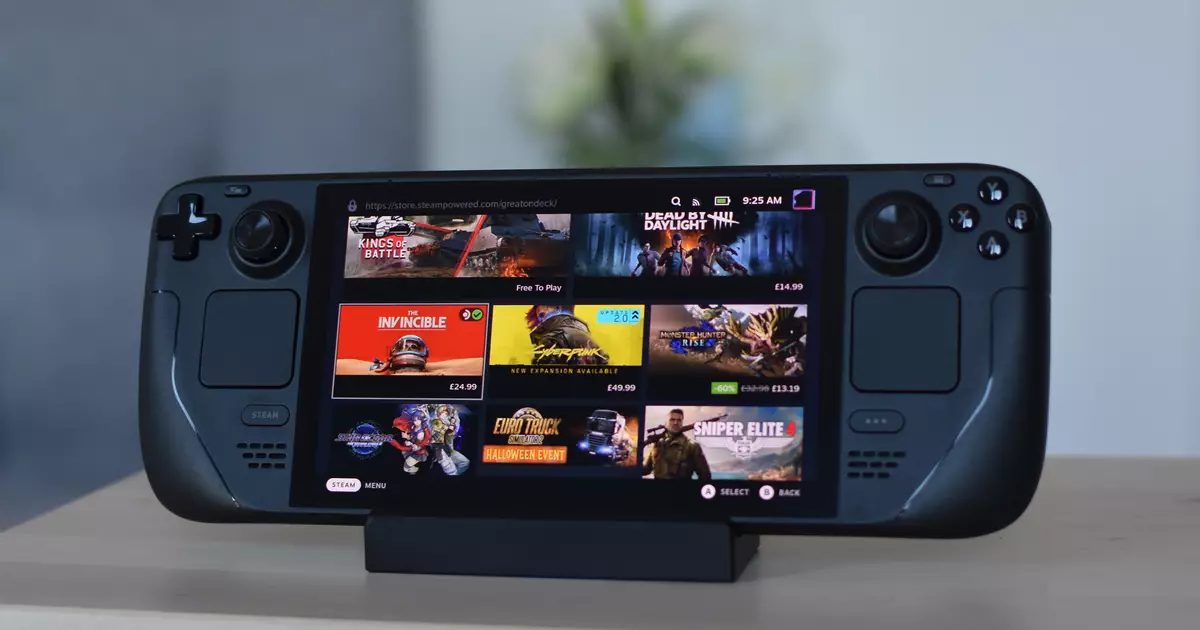In a rapidly evolving technological landscape, Valve Corporation continues to capture the gaming community’s attention with its hardware innovations. Recent reports suggest that Valve is exploring hardware options that could herald a significant shift — from the familiar x86 architecture to ARM processors. This strategic pivot, hinted by software discoveries and industry speculation, could have profound implications for how games are developed, played, and accessed across various platforms.
The possibility of Valve venturing into ARM territory stems from an intriguing piece of software identified as ‘ValveTestApp3043620.’ Associated with an expansive library of PC games, this software bears tags like ‘proton-arm64ec’ and ‘proton-arm64ec-experimental.’ Such nomenclature immediately ignites curiosity regarding Valve’s intentions; it hints at their efforts to adapt Proton—a compatibility layer essential for running Windows games on Linux-based systems—specifically to ARM64 processors.
If we analyze the reasons for this exploration, it seems logical for Valve to reconsider its hardware strategy, especially considering the emerging ARM infrastructure in devices like the Nintendo Switch and modern Apple computers. This potential transition not only raises questions about a new product lineup but also about the future of gaming compatibility and performance benchmarks.
The most straightforward interpretation of Valve’s ARM endeavor may lead to the possibility of an ARM-compatible SteamOS tailored for MacBooks. Given Apple’s success with its M-series chips, a release focused on enhancing gaming experiences on these machines could have considerable merit. While this scenario would attract existing Steam users on Mac, a broader vision is possible—one that could see Valve integrating ARM into its core hardware strategically.
For example, the transition to ARM processors could enable the development of power-efficient devices such as an advanced version of the Steam Deck or a lightweight standalone VR headset. The inherent efficiency of ARM architecture could lead to extended battery life and improved performance for portable gaming experiences, which could become more appealing in an increasingly mobile world.
However, shifting to ARM is not without its challenges. ARM’s distinct architecture may pose compatibility issues when it comes to running traditional PC games, particularly since many titles are exclusively designed for x86 systems. Despite advancements in ARM technology making these processors more competitive, the adaptation process involves more than just tweaking existing software; it could require a complete reimagining of how games operate on a new platform.
While the Proton framework is celebrated for its ability to facilitate compatibility, realizing seamless performance for ARM-based gaming will likely demand substantial effort and innovation. Users are accustomed to specific performance standards in their gaming experiences, and any compromise could lead to skepticism towards Valve’s new hardware, particularly if game-play experiences are adversely affected.
Ultimately, Valve’s consideration of an ARM-based hardware lineup signals an exciting, albeit uncertain, future for gaming enthusiasts. The potential benefits—higher power efficiency, easier integration of mobile gaming options, and fresh hardware designs—are all compelling reasons for Valve to explore this new territory. Yet, ensuring that game performance and compatibility remain top-notch will be the crux of this venture.
As Valve has firmly established itself in the gaming hardware domain over the last decade, it is conceivable that their exploration of an ARM-focused ecosystem is not merely a passing fancy but rather a strategic long-term vision. Whether this translates to new Steam Machines or other innovative platforms remains to be seen, but one thing is clear: Valve isn’t likely to step back from hardware innovation anytime soon. The gaming community will hopefully watch closely as Valve’s intentions unfold, anticipating an era of gaming that coincides with the agility and efficiency of ARM technology.

